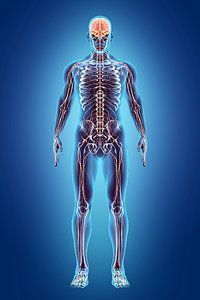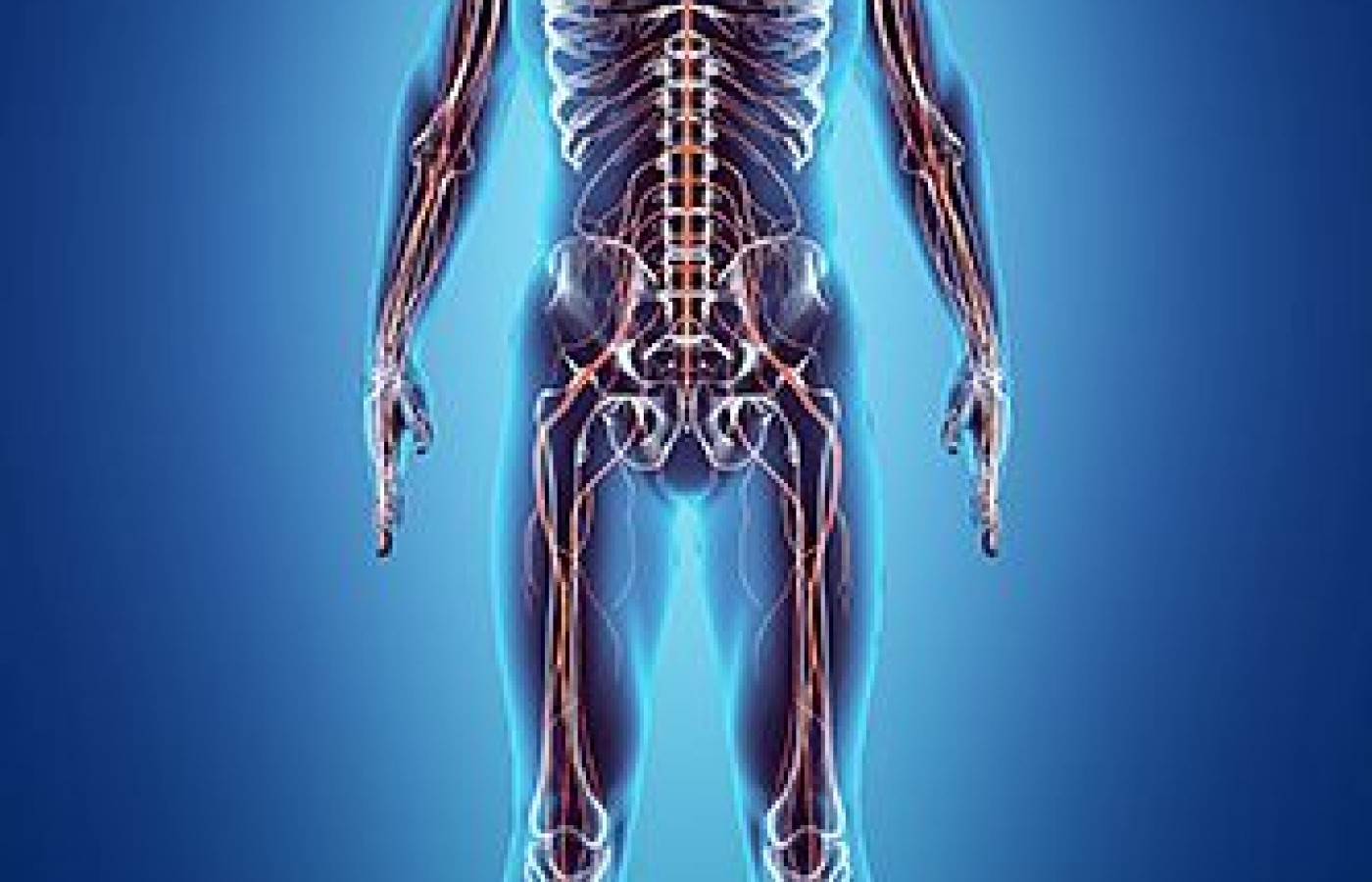You became a chiropractor to serve people, not an insurance company. You deserve to run a business that aligns with your values, supports your family and lights you up. Cash-based care isn’t just a pricing model – it’s a philosophy rooted in freedom, trust and respect for your patients and for yourself. Here's why - and how - to do it.
A Nutraceutical for Neuropathies: Agmatine
Various traumatic insults result in nerve damage, including nerve compression-induced neuropathies, e.g., lumbar (sciatica) and cervical radiculopathies, and carpal tunnel syndrome; traumatic injury-associated neuropathies; metabolic diseases (e.g., diabetic neuropathy); drug toxicity (e.g., chemotherapy-induced neuropathies); infections (e.g., post-herpetic neuralgia); trigeminal neuralgia, fibromyalgia and other peripheral and even central (e.g., multiple sclerosis- and stroke-associated neuropathic pain) neuropathies. It is estimated that more than 20 million people in the United States alone suffer from neuropathy of various causes.1
Nerve damage sets in motion a "cellular stress response" within the affected nerve cells, comprised of a series of destructive processes which are countered by constructive molecular reactions. Inability to mount an effective constructive reaction and to downregulate destructive processes results in neuronal malfunctions, failure of regeneration and may eventually lead to cell death.
While numerous neuroprotective therapies aimed at preventing this molecular imbalance have been proposed, they have failed in clinical development.2 Effective treatment for neuropathy remains elusive despite decades of research. Existing drug treatments are of limited efficacy and have serious adverse effects. Current treatments do not address the various underlying molecular processes which are triggered by nerve damage and do not afford neuroprotection.2
However, in theory, a single agent capable of modulating, potentially synergistically, multiple molecular targets – acting like a "molecular shotgun" – would prove an effective treatment for neuropathy. Naturally occurring neuroprotective molecules offer tangible opportunity for developing effective therapeutics with minimal side effects.3

Based on the discovery that agmatine is endowed with robust neuroprotective effects, I propose that agmatine might constitute such a candidate.
Agmatine: Potential Uses and Mechanisms of Action
Agmatine [(NH2(CH2)4NH2C(NH=)NH], discovered by Albrecht Kossel in 1910, is a ubiquitous naturally occurring molecule biosynthesized by decarboxylation of the amino acid arginine. Ample studies using animal models implicate agmatine in a spectrum of diseases with unmet therapeutic needs, including diabetes mellitus, neurotrauma (e.g., stroke, brain and spinal cord injury, glaucoma), neuropathies and neuropathic pain, opioid analgesia and addiction, neurodegenerative diseases (e.g., Parkinson's disease) and mood (e.g., anxiety, depression) and cognitive disorders. The few reported clinical studies provide evidence for agmatine's effectiveness in treating neuropathies.4
Multiple molecular targets are implicated in agmatine mechanisms of action, including the following:
- Modulation of several neurotransmitter receptors and receptor ionophores
- Blockade of key ionic channels
- Inhibition of membrane transporters;
- Modulation of nitric oxide formation
- Modulation of polyamine metabolism
- Inhibition of protein ADP-ribosylation, thus interfering with cell signaling
- Inhibition of matrix metalloproteases (MMPs), enzymes implicated in nerve cell death and neuropathic pain
- Inhibition of advanced glycation end (AGE)-product formation, a process involved in the pathology of diabetes and neurodegenerative diseases4
My colleague (Varda Gilad) and I therefore postulated that to exert its beneficial neuroprotective effects, agmatine interacts, potentially synergistically with multiple mechanisms, like a "molecular shotgun" hitting multiple targets critical for nerve functions.
Supply and Metabolism
While agmatine is synthesized in the body, it is also acquired from the diet, where it is found in low amounts in a wide variety of plant-, fish- and animal-derived foodstuff.5 Many gastrointestinal (GI) bacteria produce agmatine and the significant concentrations of agmatine in the mammalian GI tract implicate microbial production as the main source of systemic agmatine.5
Agmatine sulfate, the commonly used salt of agmatine, is absorbed in the GI tract and rapidly (within minutes) distributed throughout the body; it is eliminated unmetabolized by the kidneys with an apparent blood half-life of about 2 hours.4
In the body, agmatine is principally metabolized into urea and putrescine, the diamine precursor of polyamines, which are essential for viability of nerve cells.6 Additionally, agmatine can be oxidized in peripheral tissues, resulting in agmatine-aldehyde, which may be toxic and is secreted by the kidneys.4
Effectiveness: Sciatica
Human clinical trials have shown that long-term (years) treatment with high doses of dietary agmatine sulfate (1,335 to 3,560 mg/day) is safe, lacking adverse effects.7-8 In a controlled, randomized trial (ClinicalTrials.gov Identifier: NCT00405041) designed to assess the effectiveness of agmatine in herniated lumbar disc-associated radiculopathy, commonly termed sciatica, patients treated with agmatine (2.67 g per day for 14 days) as an add-on to conventional treatments experienced significantly greater pain relief and improved quality of life, as compared to placebo-treated patients.7
Sciatica affects approximately 1-2 percent of the population. In many patients, the symptoms can be treated with physical therapy, rest and the use of medications, including nonsteroidal anti-inflammatory drugs. For many others, pain can be a lingering and debilitating problem.
It is theorized that this pain is caused by pressure on nerve roots, which may result in nerve cell degeneration. The clinical trial indicates that as compared to conventional therapeutics, agmatine presents a superior solution for safe and effective treatment for sciatica.
Effectiveness: Small-Fiber Neuropathy
SFN, characterized by neuropathic pain as well as autonomic dysfunctions, is a significant cause of disability. Current medications are often not effective and can cause serious side effects. The pathology of SFN is common to several types of peripheral neuropathy, including: diabetic, chemotherapy-induced and cryptogenic (idiopathic) neuropathies.
In a recent open-label study to evaluate the effectiveness of agmatine sulfate in people with painful SFN (ClinicalTrials.gov Identifier: NCT01524666), patients treated with agmatine (2.67 g per day for two months) as an add-on to conventional treatments, experienced reduction in neuropathic pain and improved autonomic functions.9
Clinical Takeaway
In summary, growing evidence supports the utility of agmatine as a safe and effective nutraceutical treatment, superior to existing therapeutics for patients suffering from neuropathies.
References
- Peripheral Neuropathy Fact Sheet. National Institute of Neurological Disorders and Stroke.
- Meacham K, et al. Neuropathic pain: central vs. peripheral mechanisms. Curr Pain Headache Rep, 2017;21:28-39.
- Rountree R. Nutritional and botanical approaches for peripheral neuropathy. Alternat Complement Therap, 2015;21(3):99-105.
- Piletz JE, et al. Agmatine: clinical applications after 100 years in translation. Drug Disc Today, 2013;18(17-18):880-893.
- Galgano F, et al. Agmatine in fermented foods. Front Microbiol, 2012;3:1-7.
- Gilad GM, Gilad VH. Overview of the polyamine-stress-response. Regulation, development, modulation by lithium and role in cell survival. Cell Mol Neurobiol, 2003;23:637-649.
- Keynan O, et al. Safety and efficacy of dietary agmatine sulfate in lumbar disc-associated radiculopathy. an open-label, dose-escalating study followed by a randomized, double-blind, placebo-controlled trial. Pain Med, 2010;11:356-368.
- Gilad GM, Gilad VH. Long-term (5 years), high daily dosage of dietary agmatine – evidence of safety: a case report. J Med Food, 2014;17(11):1-4.
- Tohidi V, et al. Effects of agmatine sulfate on neuropathic pain. 66th Annual Meeting of the American Academy of Neurology, Philadelphia, Pa., May 1, 2014. Presentation: 968AAN10D1 (Abstract: 4082), poster presentation: P7.094, session VII.



